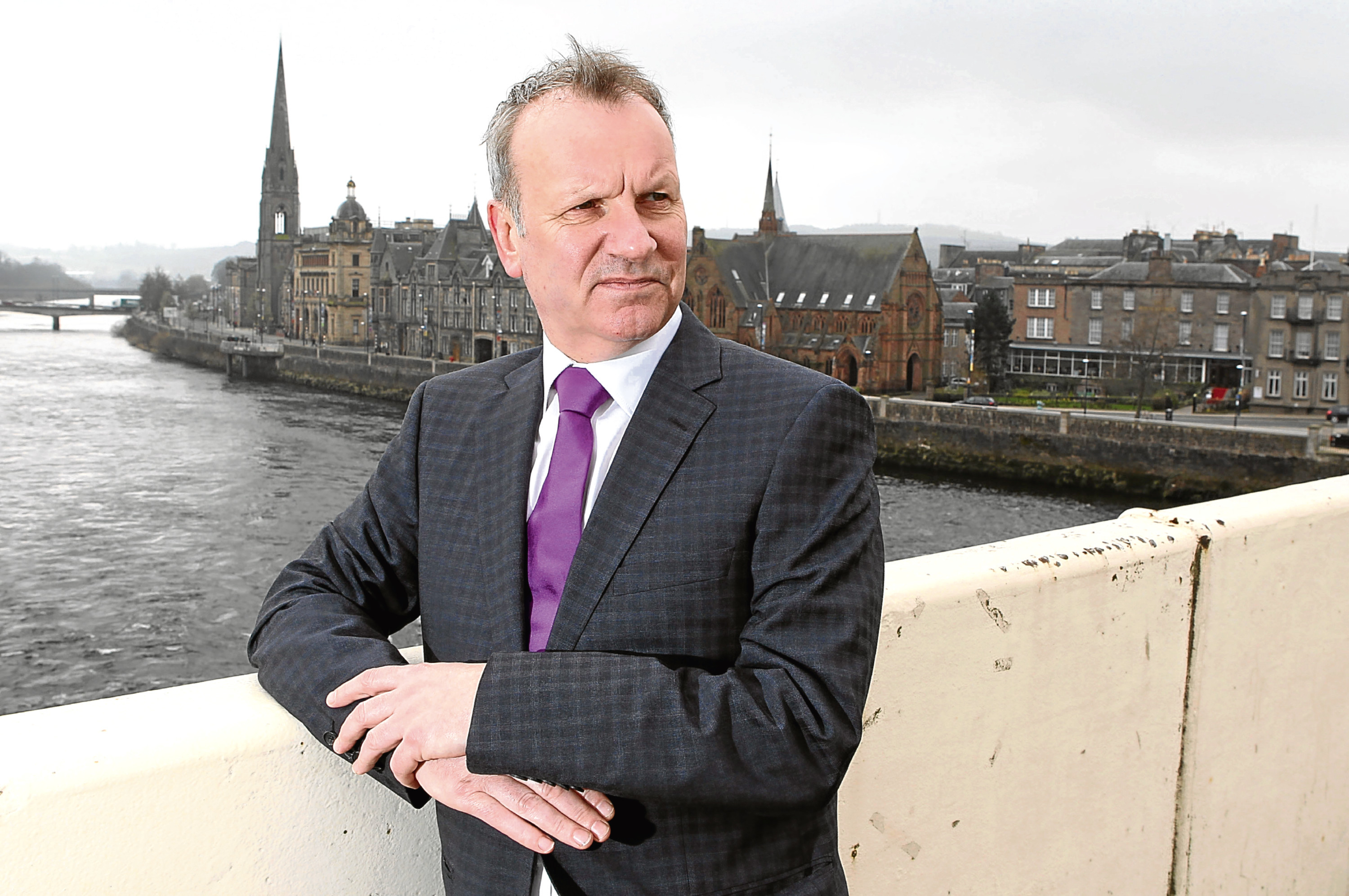Ian Duncan, the newly-selected Conservative candidate for Perth and North Perthshire, is fortunately a seasoned campaigner.
A Tory MEP since 2014, head of the Scottish Parliament’s office in Brussels for seven years and a former second-in-command at the Scottish Fishermen’s Federation, he is used to the bearpit of politics.
He will need all this experience, and a thick skin too, because he is contesting the seat held for 12 years by Pete Wishart.
The nationalist MP, who commands an imposing majority, claims every single person in his constituency will know someone he has helped.
That is some boast and, short of a mass vox pop in the area, one that is impossible to verify. What can be said of Wishart with certainty, though, is that he speaks before he thinks.
Twitter noise
Renowned for his intemperate outbursts, normally via Twitter, he recently lashed out at the unionists standing in the May council elections, using language too fruity for this newspaper to repeat.
Attempts to have him disciplined for his latest online abuse fell on deaf ears in his party, but at least Duncan will know what to expect in the run-up to the June 8 general election.
If Wishart, who said he will fight for every vote, sounds on the defensive already, it may be because recent opinion polls have made him jittery.
The Tories’ support is rising north of the border, with weekend polls tipping them to win a third of the vote and up to 12 seats.
This would still leave the SNP with a sizeable majority of Scottish MPs, but it would be a decisive blow all the same.
If the Lib Dems picked up a couple more marginals north of the border, the nationalists’ near hegemony of 2015, when they won 56 out of 59 Westminster seats, would be history.
The Scottish elections last year saw the beginnings of the Conservative assault on nationalist strongholds, with Ruth Davidson’s party whittling back the SNP majority in Holyrood and becoming the main opposition party.
Seemingly impregnable nats like John Swinney suffered a hammering – with his majority cut from 10,353 to just 3,336 – in roughly the same patch Wishart represents in the Commons.
The fact the seat is even being discussed now as a key election battleground shows how far nationalist fortunes have dived since 2015.
Domination
Such has been the separatists’ ascendancy in the past few years that they have often seemed unstoppable.
Even though they couldn’t persuade a majority of Scots to break up the UK, they have been the dominant parliamentary force since 2011.
They don’t therefore need to lose all their Westminster seats – welcome though that would be to some of us – to be damaged.
Their whole premise for subjecting the Scottish electorate to a second independence referendum so soon after the last one in 2014 depended on the nationalists’ sense of momentum.
So long as they maintained their winning streak, it was plausible for them to argue they were reflecting Scottish interests. If that luck runs out, their so-called mandate ceases to exist.
Polls have consistently shown people are not in favour of further constitutional upheaval, there is no appetite for a second indyref, and Brexit has produced no surge in separatist support.
Now we learn even Theresa May’s decision to block the SNP’s call for a new referendum has not spectacularly backfired, as forecast by Alex Salmond.
Rather, Scots are no more likely to vote for independence today than they were before the Prime Minister’s “now is not the time” rebuff.
Nicola Sturgeon was counting on being able to rouse the nation on the back of the hard Brexit Tory resurgence outside Scotland but she is learning voters have a mind of their own.
The anti-Westminster ploy that worked so well for her a couple of years ago will not necessarily hit the spot in the current circumstances.
Case destroyed?
She must know a significant dent in her tally of MPs would destroy her case for forcing another referendum on a reluctant public, especially if she loses some big names such as Wishart and the party’s Westminster leader Angus Robertson, whose Moray seat has a pro-Brexit bias and must be considered vulnerable.
The problem for her is, if the nationalists have reached their peak popularity, there won’t be an opportunity for a new independence ballot for many years to come – a generation, in fact.
No wonder Davidson’s Tories, who mean to wage electoral war on this issue alone, are rubbing their hands with glee.
